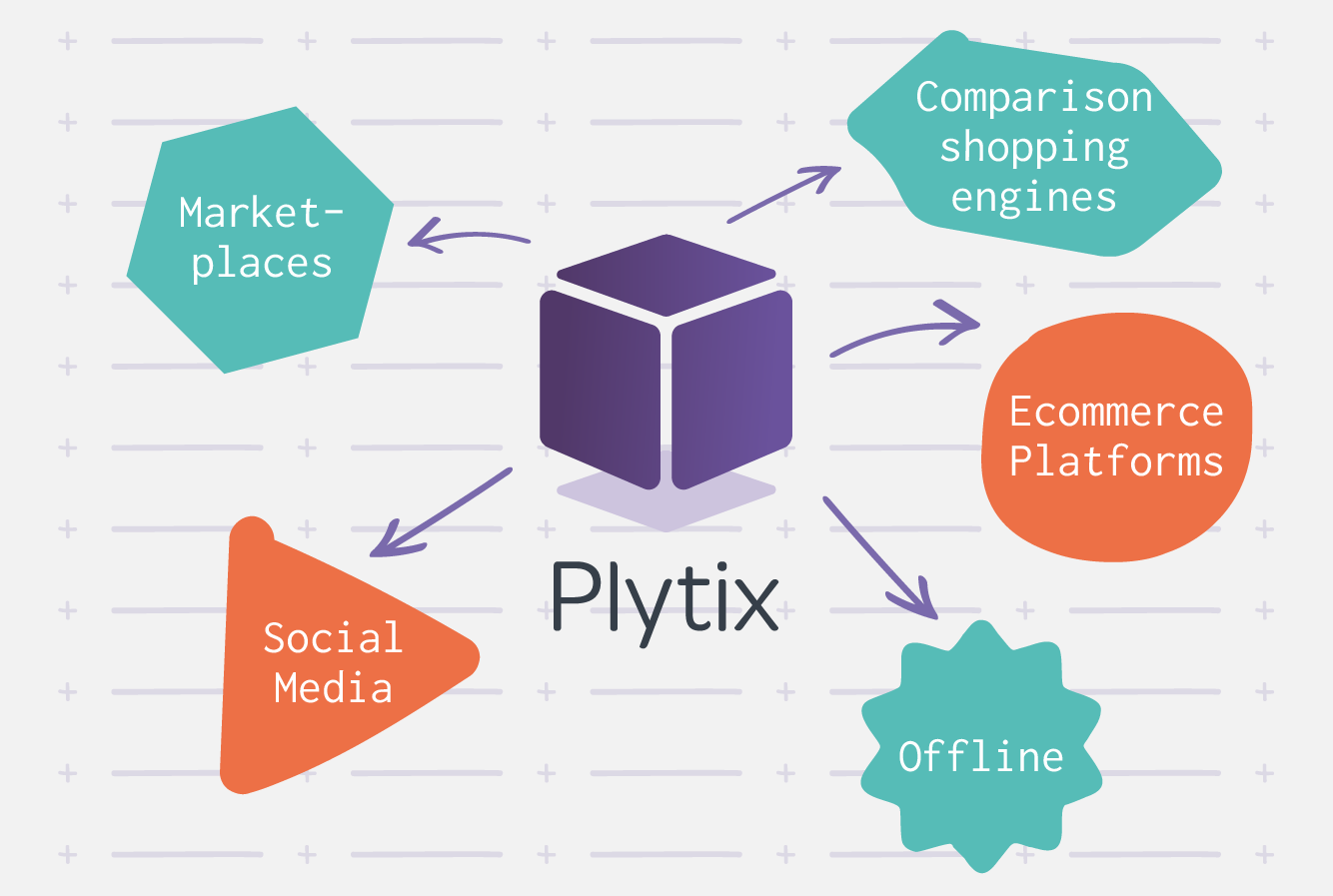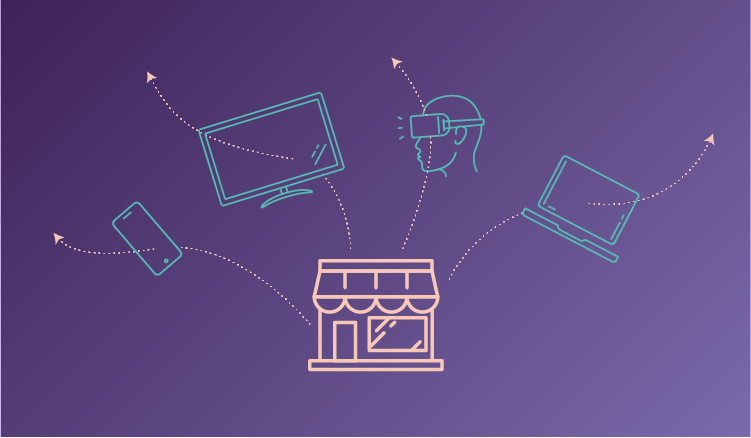Today, brands and retailers are overwhelmed with tips, hacks, and schemes that promise to grow revenue to an unbelievable (hmm, wonder why?) number overnight.
However, at Plytix, we don’t buy into all that crap. Our mission is to empower ecommerce marketers and managers with sleek technology and strategies that work. We believe in working smarter, not harder—so keep reading to learn our five simple and effective strategies for ecommerce pricing and revenue optimization.
The Key Elements of Maximizing Product Revenue for Ecommerce
To optimize ecommerce revenue, brands and retailers must strategically leverage omnichannel retailing, marketing, inventory management, and pricing.
Omnichannel retailing (Interested in going omnichannel? We’ve got a book for that.) ensures you’ve established a positive brand identity on each of the channels your ideal shoppers frequent, marketing uses those same channels to deliver messaging that drives relevant consumers to your sales platforms, and inventory management provides the kind of products shoppers want in a quantity you can afford without stunting your cash flow. And pricing? Pricing is one of the last product attributes a shopper considers before they either make a purchase or bounce off to a competitor—so you better know how to make it work for you.
Pricing is often overlooked as a key revenue optimization strategy because it seems too simplistic. All you can really do with prices are lower them, right?
Wrong. There are actually plenty of pricing strategies out there—including raising prices to generate more revenue than your current, lower prices do!
Let’s look at how to use pricing as a key revenue optimization tool.
5 Ways to Reach Peak Ecommerce Pricing (and Revenue) Optimization
Pricing is extremely important when it comes to maximizing sales and, in turn, revenue. In fact, as many as 85 percent of people say pricing is the most important purchasing decision.
Backed by data, implemented quickly, and always done with a watchful eye on market conditions and demand—these five strategies will help you maximize ecommerce pricing (and revenue) optimization!
Account for Price Elasticity
Unfortunately, pricing still requires a whole lot of tweaking and testing before you find the strategy that’s best for your business and your customers. That’s why it’s important to start by understanding a key phenomenon in ecommerce—elasticity.
Price elasticity is a way to figure out how responsive your customers are to fluctuations in price. The formula is actually pretty simple: Price elasticity = (percent change in quantity demanded) / (percent change in price)
When price elasticity is less than 1, it’s considered inelastic. That means increasing the pricing won’t immediately drive down demand or sales. With these products, you’ll probably be able to adjust pricing upward and keep sales steady. On the flip side, elasticity over 1 means the good is elastic. Small price changes could impact demand. Here, you could lower pricing and increase inventory to optimize revenue.
Generally speaking, necessities—like gasoline, electricity, etc.—tend to be inelastic. Consumers will continue to purchase them for as long as they can in order to avoid changing their lifestyle. Extras and luxuries like takeout food and entertainment are elastic. People are much more willing to drop these items if the price goes above their sensitivity threshold.
Understanding price elasticity is one of the best ways to maximize your pricing and revenue optimization efforts.
Price Dynamically
Dynamic pricing is the practice of offering goods at different prices according to factors like supply, demand, competitors’ pricing, conversion rates, sales goals, and more.
While the concept of dynamic pricing has existed for decades, it’s fast becoming a standard in ecommerce thanks to the development of software that uses machine learning and smart algorithms to automate pricing calculations, predictions, and decisions.
When shopping for dynamic pricing software, be sure it has these core capabilities:
- Analyzing profitability
- Analyzing individual customer behavior to personalize price
- Analyzing the market to out-price competitors
- Automating price management
- Forecasting price trends
- Ability to adapt to various situations and changes
Price Based on Value
Depending on your products and your existing clientele, you might find some hidden value in pricing based on, well, value!
Typically, shoppers are prepared to pay more for products that offer more value than comparable ones. To price based on value, ecommerce managers must measure the difference in value between their product and the next best alternative for a particular set of consumers, put a dollar amount on that value, and price accordingly.
Each part of the process of applying value-based pricing is vital in its overall effectiveness, so let’s break it down:
Customer segmentation: Value-based pricing only works on specific segments and specific customers. If you have multiple segments you want to optimize, it’s best to determine separate value-based prices for each.
The competition: You must identify a specific competing product against which to compare yours. Ask yourself “What would this segment buy if my product wasn’t available?”
Key differentiators: Clearly define exactly which product features differentiate you from the competing product you just identified.
The value of your unique features: The real money maker is being able to place a dollar amount on the value of your key differentiators. You have to understand how much shoppers are willing to pay for the extra value you provide. There are several ways to arrive at a number here (conjoint analysis, customer interviews, etc.)—most of which boil down to of gauging consumer reactions, testing, and tweaking.
Try Charm Pricing
Charm pricing is the practice of taking into account different psychological quirks to encourage customers to complete a purchase.
One common tactic is ending prices in “.99”. This works because consumers tend to place more emphasis on left digits than on right ones. So, instead of rounding $19.99 up to $20, our brains typically retain only the first two digits and instead round the price down to $19.
Another tactic is choosing prices that take fewer syllables to say. Sales consultant Nick Kolenda uncovered scientific research that found a positive relationship between syllabic length and perceived magnitude. That means that even when two prices are the same “length” when written out, our brains will perceive the price with more syllables as being higher.
If you’re interested in using psychology for your pricing and revenue optimization efforts, there is no shortage of interesting research online!
Use Behavioral Pricing
Behavioral pricing is exactly what it sounds like—adjusting prices based on the behavior of your online shoppers and customers.
If you’ve got your analytics rigged up correctly, you should have tons of data on behavior: search bar activity, conversions, the path shoppers take through your website, whether they sort by highest or lowest price, and much more. You can even take your research to other channels and check out how customers review your (or similar) products on marketplace sites, how they talk about your brand on social media, and so on.
Understanding the behavior of desirable (and not-so-desirable) shoppers will help you craft product descriptions, user experiences, special offers, and other campaigns that cater to the right people.
Keeping up with just these five pricing and revenue optimization strategies is enough to overwhelm any ecommerce marketer or manager—and that’s not even considering the ten other hats you’re probably wearing on any given day! We get it, and that’s why we're here to help you work smarter instead of harder when it comes to pricing and revenue optimization.
With a complete centralize, optimize, distribute, and analyze methodology that you won’t find in any other product information management tool, Plytix is guaranteed to improve your company’s revenue per employee.
Our subscription plans are affordable and flexible and your users will love the easy workflow. Start a chat with a PIM expert or sign up and start optimizing price and revenue today.




